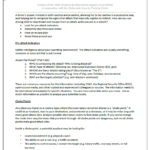
A driver’s proper mindset is both reactive and proactive, allowing her to be reactive in a productive way, and helping her to recognize the signs of an attack that may only register as instinct.
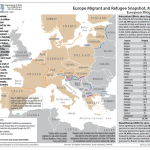
Since 2014, over 1.6 million migrants and asylum seekers have arrived by sea to Europe. European countries registered over 3.18 million new asylum applications. Over 700,000 applicants were granted a form of protective status, mostly in Germany, France, Sweden, Italy, and the Netherlands, with 450,000 applicants rejected in the same time period, and over 1.1 million pending applications at the end of 2016. Amendments to the Schengen Border Code, proposed in response to terrorist threats, aim to strengthen external borders by requiring systematic database checks at entry and exit.
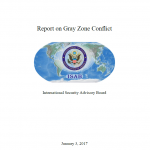
The study addresses the challenges facing the United States from the increasing use by rivals and adversaries – state and non-state alike – of what have come to be called “Gray Zone” techniques. The term Gray Zone (“GZ”) denotes the use of techniques to achieve a nation’s goals and frustrate those of its rivals by employing instruments of power – often asymmetric and ambiguous in character – that are not direct use of acknowledged regular military forces.
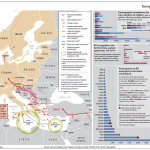
Asylum seekers and other migrants are arriving in Europe and encountering rapidly changing border controls as they seek transit through Europe. The EU is implementing its “hotspot” approach for new arrival registration in Italy and Greece. This is a snapshot of the situation based on available unclassified data as of March 4, 2016.
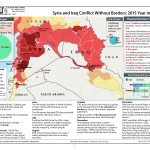
Over 15 million people have been displaced due to conflict in Syria and Iraq. The Syrian Observatory for Human Rights documented at least 260,000 Syrians killed in the conflict since it began in 2011. The UN reported at least 26,600 Iraqis killed from 2014-2015 due to acts of terrorism and violence.

Early tests show that the Islamic State of Iraq and the Levant (ISIL) used chemical agents during an attack on Kurdish Peshmerga forces on August 11 in Makhmour, Iraq. U.S. government officials reported that preliminary tests on shell fragments indicated a presence of chemical agents, although additional analyses would be necessary to determine the full composition. Early media reports have pointed to the use of mustard agent. Overall, ISIL’s use of mustard agent appears to be largely undeveloped – although the group is likely seeking to advance its capabilities – and there is no evidence that they have used mustard agent (also known as mustard gas) against civilian interests at this point.
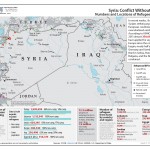
In recent weeks, the upsurge of Syrians seeking asylum in European countries has overwhelmed existing capacity. According to UNHCR, as of July 2015 almost 350,000 Syrians have applied for asylum in Europe since the conflict in Syria began, nearly half applying in Germany and Sweden and one third in Serbia, Hungary, Austria, Bulgaria, and the Netherlands combined.
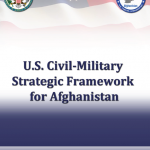
The U.S. Civil-Military Strategic Framework for Afghanistan outlines U.S. priorities through the Transformation Decade (2015-2024). It is meant to be adaptive, giving decision makers in Kabul and Washington, and policy implementers throughout Afghanistan, the flexibility needed to respond to changing conditions while advancing a set of commonly stated strategic goals and priorities.
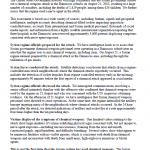
The United States Government assesses with high confidence that the Syrian government carried out a chemical weapons attack in the Damascus suburbs on August 21, 2013, resulting in a large number of casualties, including the deaths of 1,429 people, among them 426 children. We further assess that the regime used a nerve agent in the attack.
An overview presentation on the U.S. Department of State Operations Center from September 24, 2012.
The group or individuals responsible for the attack on the Benghazi consulate remains unknown. It is also unclear if the attack was premeditated or simply a demonstration that spun out of control. Following the overthrow of Muammar Qaddafi and the ensuing civil war, Libya has been awash with small arms and light weapons. The use of such arms at the demonstration does not necessarily indicate a pre-meditated, coordinated attack. Online jihadi groups have claimed the attack was due to a statement released by al-Qa’ida leader Ayman al-Zawahiri regarding the earlier death of another al-Qa’ida leader, Abu Yahya al-Libi. Others have suggested that the attack was pre-meditated to coincide with the 9/11 anniversary in the United States. Neither of those claims has been substantiated. Until more evidence comes out, OSAC is unable to conclude whether this was a pre-meditated, planned, and coordinated assault on the Consulate.
U.S. Department of State Humanitarian Information Unit map from July 19, 2012 depicting locations and numbers of internally and externally displaced persons as a result of the current conflict in Syria.
An overview of a U.S. State Department survey of Afghan women titled “Exploring Women’s Roles in Afghanistan” from October 2010.
The Lord’s Resistance Army Disarmament and Northern Uganda Recovery Act, Public Law 111-172, requires the Secretary of State to submit a report to Congress on implementation of the President’s strategy to support disarmament of the Lord’s Resistance Army (LRA) and assistance provided toward a lasting solution to the conflict in northern Uganda.
The Criminal Justice Sector Assessment Rating Tool (CJSART) is designed to assist policy makers and program managers to prioritize and administer host-nation criminal justice sectors needing assistance. Once the assistance programs are underway, the CJSART is a systematic tool designed to measure progress and accomplishments against standardized benchmarks. Used in its entirety, the CJSART holistically examines a country’s laws, judicial institutions, law enforcement organizations, border security, and corrections systems as well as a country’s adherence to international rule of law standards such as bilateral and multilateral treaties.
Every year, U.S. officials from agencies with anti-money laundering responsibilities meet to assess the money laundering situations in 200 jurisdictions. The review includes an assessment of the significance of financial transactions in the country‘s financial institutions involving proceeds of serious crime, steps taken or not taken to address financial crime and money laundering, each jurisdiction‘s vulnerability to money laundering, the conformance of its laws and policies to international standards, the effectiveness with which the government has acted, and the government‘s political will to take needed actions.
Consular Affairs has developed a highly penetrative security ink to be used exclusively for cancelling nonimmigrant visas. This unique formulation, designated security ink #297, is specially designed to penetrate TESLIN, the synthetic material used as the basis of visa foils issued since late 1993 until the recent introduction of the Lincoln Visa. The ink finally selected was chosen after extensive laboratory testing undertaken by both the U.S. Secret Service and INS/FDL. Up to now, there existed no genuinely effective means for cancelling a visa permanently short of destructive methods that risked damaging the underlying passport page. To remedy this, CA commissioned the manufacture of two types of visa cancellation stamps in conjunction with the new security ink, and they are being distributed to visa issuing posts worldwide.
The recent social unrest and subsequent government overthrows in Egypt and Tunisia have had deep reverberations not only around the Middle East, but throughout the world. While speculation proliferates about which country will be the next to experience such tumult, a critical analysis of important variables present in both countries should be applied to any other country when making this assessment. In this report, those variables will be analyzed with respect to the People’s Republic of China, and the probability it will be the next country to experience social unrest.
Two U.S. State Department OSAC Reports on the Caucasus Emirate from August and September 2010.
OSAC constituents operating in India face a multitude of threats, many of which are difficult to evaluate from a security standpoint. Often times, the international media will mimic the hyperbolic Indian news industry and sensationalize a security concern, resulting in significant private sector hand-wringing. One such example of this is the Communist Party of India-Maoist insurgency in India, popularly known as the Naxalite movement. For instance, Naxalites ambushed and killed 75 members of India’s Central Reserve Police Force on patrol in Chhattisgarh state on April 6, 2010. The disaster triggered alarmist headlines around the world. A headline in the British Independent on April 8 screamed “Who are the Naxalites and will they topple the Indian Government?” The attack also brought renewed attention to the Naxalites from publications such as The Economist and The New York Times, which typically publish maps showing the current “extent” of the Naxal problem alongside their analyses. Even the Prime Minister of India Manmohan Singh is on record as saying that the Naxalites are the greatest threat India faces.
On December 15, 2009, the City of London Police released film footage of hostile reconnaissance conducted in July 2008 by an Algerian national (Subject 1). Subject 1 was stopped by two alert police officers who saw him using his cell phone camera to record video inside Liverpool Street Station in London. When the police officers examined the footage they found 90 minutes of video recording of various sites in and around London and several UK cities to include Tube and mainline rail stations, shopping areas, bars, and restaurants. His detention and the follow-up investigation led to the arrest of Subject 1’s brother (Subject 2) and a third Algerian male (Subject 3). British authorities also looked at 30 other individuals and recovered extremist material supporting al-Qa’ida in the Islamic Maghreb in one residence. Police believe the two brothers may have been fundraising and conducting surveillance for a future terrorist operation.